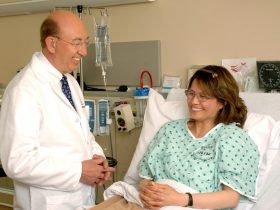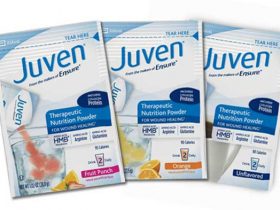By Nancy Collins, PhD, RDN, LD, NWCC, FAND
Chronic wounds impact 15% of Medicare beneficiaries at an estimated annual cost of $28 billion to $32 billion, making nutrition a seemingly cost-effective purchase.
Did you ever wonder how much it really costs to treat and heal various wounds? Patients, family members, and healthcare team members often complain to me that $5/day for nutrition therapy is “too expensive.” Cost is relative, because according to the first comprehensive study of Medicare spending on wound care, it appears that an investment in medical nutrition therapy is a wise investment indeed.
The Newest Study
A new study entitled An Economic Evaluation of the Impact, Cost, and Medicare Policy Implications of Chronic Nonhealing Wounds,1demonstrates the economic impact of chronic nonhealing wounds in the Medicare population and highlights the associated need for quality measures and reimbursement models for wound care within the US Centers for Medicare & Medicaid Services (CMS) payment policies. The study analyzed 2014 Medicare data to determine the cost of chronic wound care for Medicare beneficiaries in aggregate, by wound type, and by care setting.
Key Findings
- Chronic wounds impact nearly 15% of Medicare beneficiaries (8.2 million), far more than suggested by previous studies.
- A conservative estimate of the annual cost of wounds is $28 billion when the wound is the primary diagnosis on the claim. When the analysis included wounds as a secondary diagnosis, the cost for wounds is conservatively estimated at $31.7 billion.
- Including the cost of infections, the most expensive chronic wounds were surgical wounds ($11.7 billion* to $13 billion**) and diabetic foot ulcers ($6.2 billion* to $6.9 billion**).
- On an individual wound basis, mean Medicare spending per wound was $3415* to $3859.** The most expensive wounds per beneficiary were arterial ulcers ($9105* to $9418**), followed by pressure injuries ($3696* to $4436**).
- Surgical infections were the largest prevalence category (4.0%), followed by diabetic wound infections (3.4%).
- For site of service, the highest cost estimates were for hospital outpatients ($9.9 billion* to $11.4 billion**), demonstrating a major shift in costs from hospital inpatient to outpatient settings.
Call to Action
The true burden of wound care to Medicare has stayed relatively hidden. The study’s calculation and documentation of the economic costs and impacts can have important implications for federal research funding and CMS policies, such as the Medicare Access and the CHIP Reauthorization Act of 2015 (MACRA).
With quality measure-based payment models driving reimbursement under MACRA, wound care practitioners are particularly challenged, with no reportable performance measures relevant to wound care under the Merit-based Incentive Payment System.
The documentation of the specific, significant burden of chronic wounds in the Medicare population illustrates the need for CMS and health policy makers to include wound-relevant quality measures in all care settings, as well as to develop episode of care measures, chronic care models, and reimbursement models to drive better health outcomes and smarter spending in the wound care space.
The Nutrition-Wound Connection
A study by Philipson et al shined a light on the value of oral nutrition supplements in hospitalized patients. Timely nutrition intervention has the power to help a patient heal quicker and cost the healthcare system less money in not only episode costs, but also reduction in length of stay and the probability of a 30-day readmission.2 Beyond that, speedier wound healing costs the patient less in emotional suffering and caregiver burnout, which should be everyone’s goal.
Nutrition in the year 2017 has come a long way and consists of a nutrition-focused physical exam, including functional tests, body composition analysis, and the right mix of both macronutrients and micronutrients. Today we use cutting edge whole protein modules to meet nitrogen requirements, plus targeted amino acids, including arginine, glutamine, and a bioactive metabolite of leucine called β-hydroxy-β-methylbutyrate (HMB) to help build new tissue.
A study by Williams et al3 examined the effect of arginine, glutamine, and HMB supplementation on wound collagen accumulation in a double-blind, randomized study. Thirty-five healthy, nonsmoking human volunteers 70 years of age or older were enrolled and underwent subcutaneous implantation of two small, sterile polytetrafluoroethylene (PTFE) tubes into the deltoid region, thereby creating the wound environment. The subjects either received the amino acid mixture or an isonitrogenous, isocaloric supplementation of nonessential amino acids.
Catheters were removed at 7 and 14 days post-implantation and were analyzed for hydroxyproline as an index of collagen accumulation. At the 14-day point, the amino acid supplement led to a significant increase in collagen deposition. This is only one example of how medical nutrition therapy can help wounds heal.
If you are concerned about costs, make sure to include a registered dietitian nutritionist on your team!
* Estimates include Medicare provider payments only when a wound was the primary diagnosis on a claim.
** Estimates include the entire payment of a claim if a wound diagnosis was the primary diagnosis and also attribute partial payments per a predefined methodology when a wound was a secondary diagnosis.
References
1.Nussbaum SR, Carter MJ, Fife CE, et al. An economic evaluation of the impact, cost, and Medicare policy implications of chronic nonhealing wounds. Value in Health. 2018 Jan;21(1):27-32. doi: 10.1016/j.jval.2017.07.007. Epub 2017 Sep 19.
Free full text: Click here
2. Philipson TJ, Snider JT, Lakdawalla DN, Stryckman B, Goldman DP. Impact of oral nutritional supplementation on hospital outcomes. Am J Manag Care. 2013;19(2):121-128.
3. Williams JZ, Abumrad N, Barbul A. Effect of a specialized amino acid mixture on human collagen deposition. Ann Surg. 2002;236(3):369-375.













